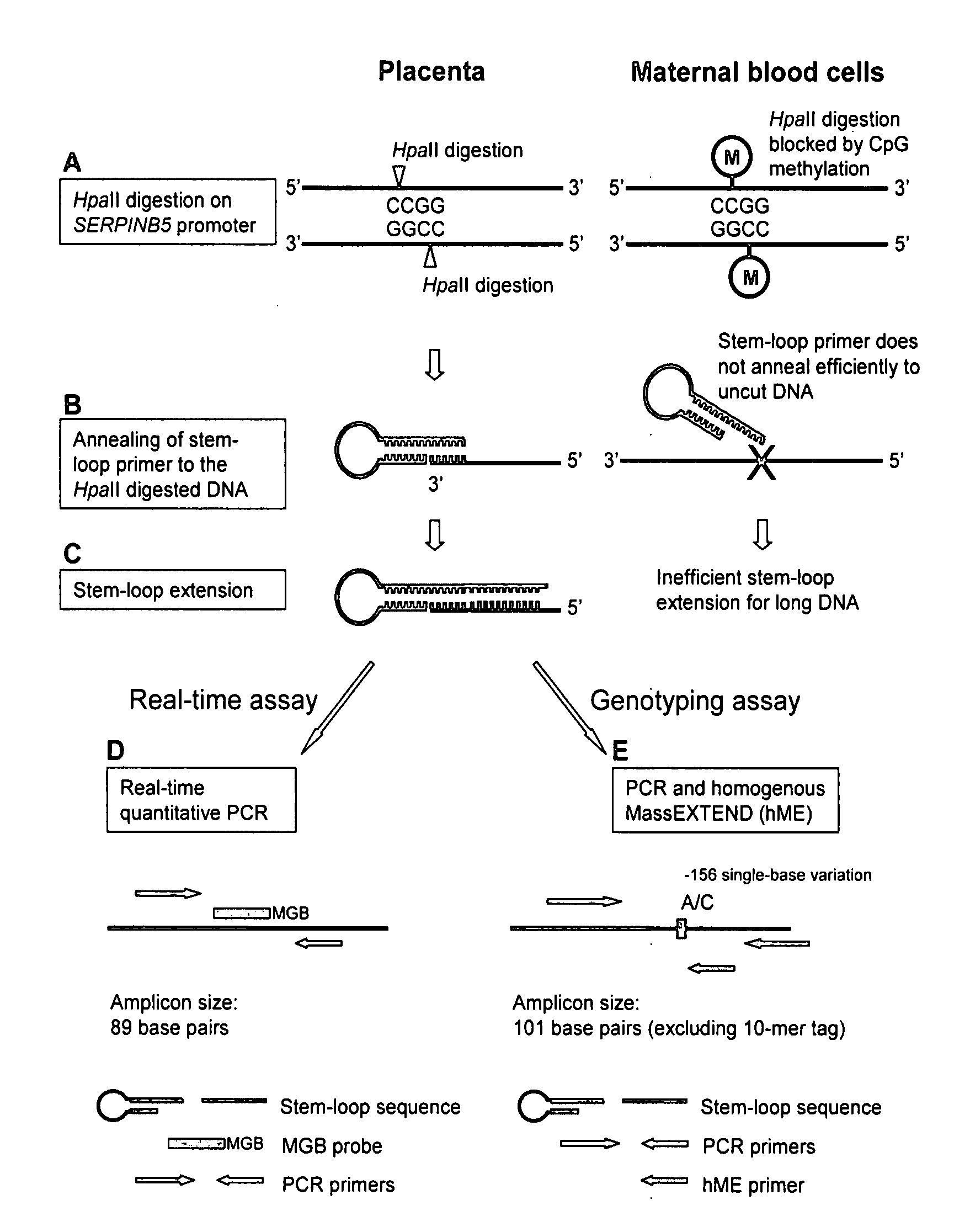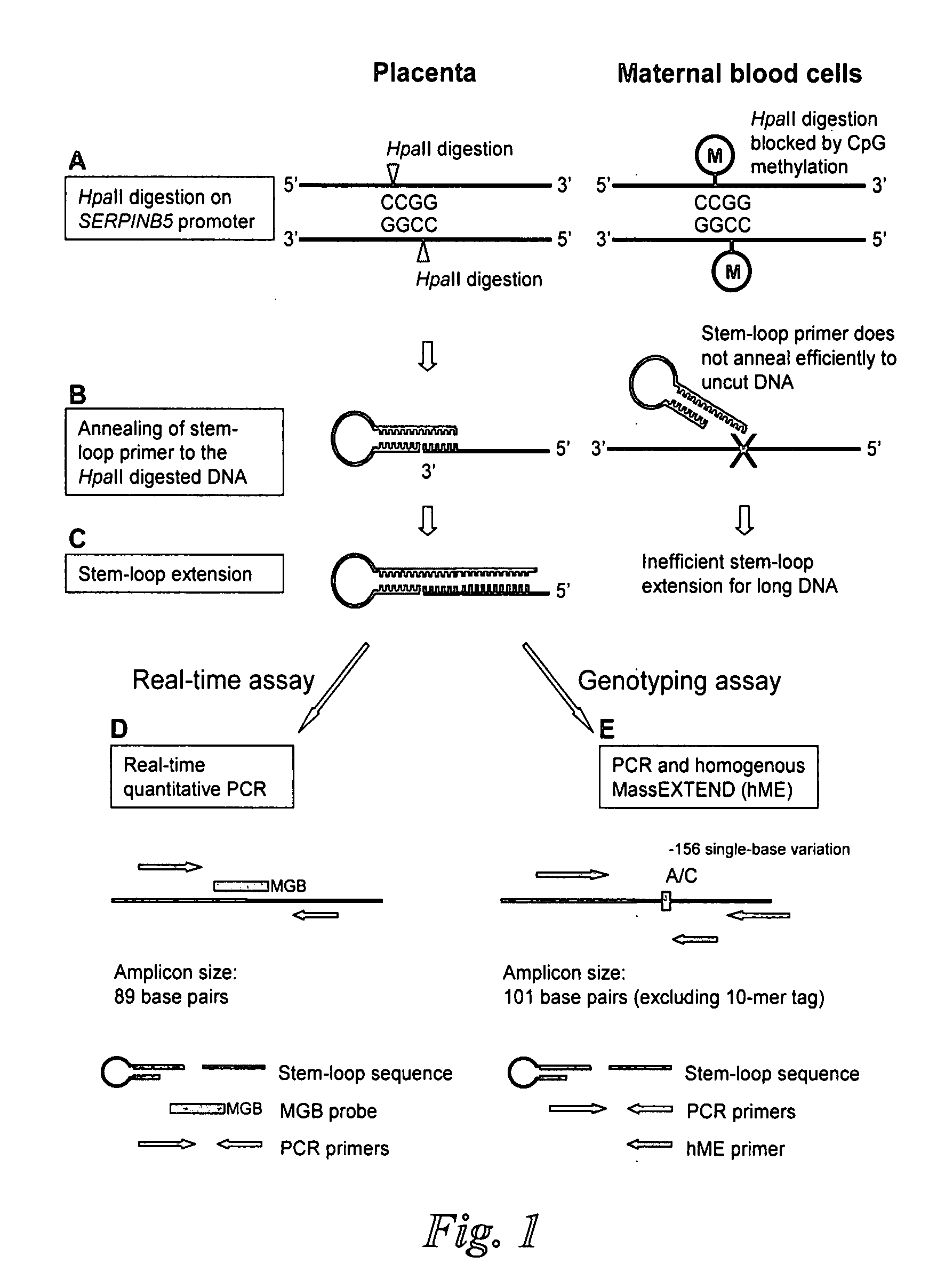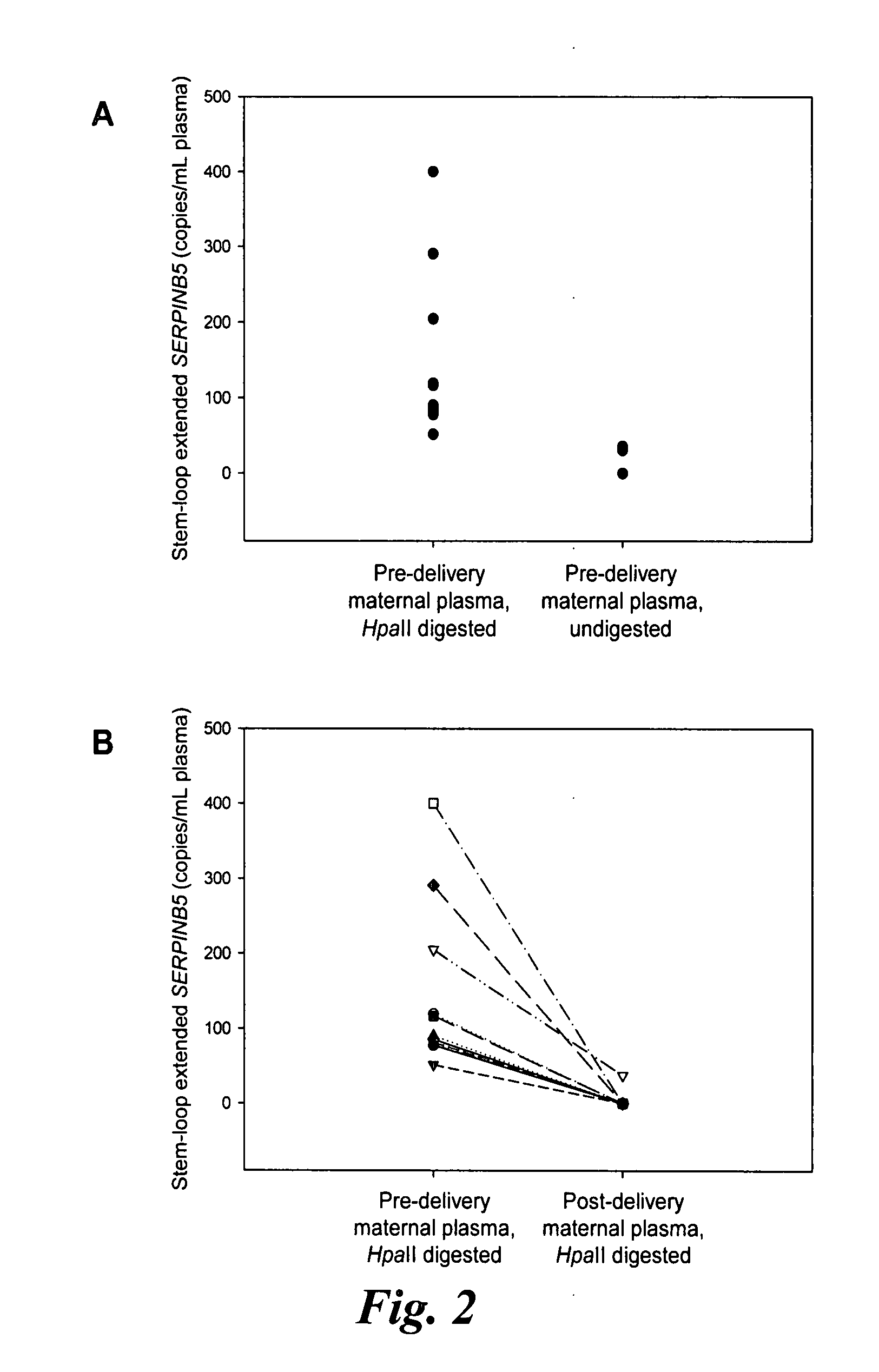Methods and kits for selectively amplifying, detecting or quantifying target DNA with specific end sequences
- Summary
- Abstract
- Description
- Claims
- Application Information
AI Technical Summary
Benefits of technology
Problems solved by technology
Method used
Image
Examples
examples
Materials and Methods
[0083]Mechanism of Stem-Loop Primer Mediated Amplification
[0084]The mechanism of the stem-loop primer extension on fragmented DNA is illustrated in FIGS. 1A to 1C, taking the SERPINB5 promoter as an example of the target DNA. After restriction enzyme digestion, the SERPINB5 promoter would be cut at specific restriction sites. The stem-loop primer was designed in such a way that the last few nucleotides on the 3′ portion were complementary to the 3′ end of the enzyme restriction site on the SERPINB5 promoter (FIG. 1B). In our assay, the complementary number of bases on the 3′ portion of the stem-loop primer to anneal to the SERPINB5 promoter was six bases long.
[0085]The SERPINB5 promoter is hypomethylated in the placenta and hypermethylated in maternal blood cells (Chim, et al., Proc Natl Acad Sci USA, 102:14753-8 (2005)). Enzyme digestion was performed by HpaII, a methylation-sensitive restriction endonuclease which recognized and cut the DNA sequence CCGG, and ...
PUM
| Property | Measurement | Unit |
|---|---|---|
| Volume | aaaaa | aaaaa |
| Volume | aaaaa | aaaaa |
| Volume | aaaaa | aaaaa |
Abstract
Description
Claims
Application Information
 Login to View More
Login to View More - R&D
- Intellectual Property
- Life Sciences
- Materials
- Tech Scout
- Unparalleled Data Quality
- Higher Quality Content
- 60% Fewer Hallucinations
Browse by: Latest US Patents, China's latest patents, Technical Efficacy Thesaurus, Application Domain, Technology Topic, Popular Technical Reports.
© 2025 PatSnap. All rights reserved.Legal|Privacy policy|Modern Slavery Act Transparency Statement|Sitemap|About US| Contact US: help@patsnap.com



